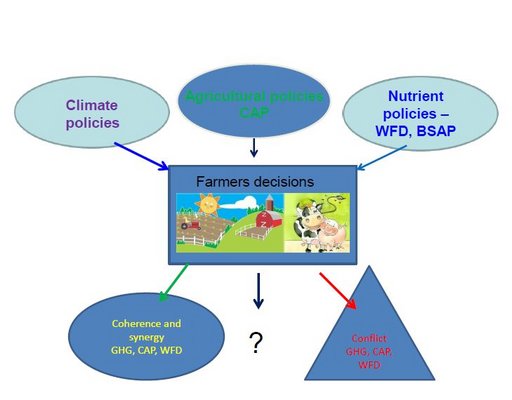Project and content

Excessive nutrient loads cause eutrophication of the Baltic Sea, as well as climate change because of greenhouse gas emissions. Internationally agreed targets have not yet been reached, e.g. the Baltic Sea Action Plan. This can be explained by the ambitious targets, but also with the fact that it is difficult to distribute abatement costs across sectors and countries.
Furthermore the policy instruments used to implement the policies might have been inefficient. Of course there are also problems with time delays in sea response. In Go4Baltic we dont deal with the sea response, but focus on how policies can be more cost-effective, and how the different policies influencing the Baltic Sea environment and the polluters might be either conflicting or coherent.
We seek to provide answers on a number of questions:
How successful are national and international policies in promoting low-cost abatement in the short and long term, with specific focus on eutrophication?
How cost-effective are the policies, and instruments used? Which policies and instruments can be suggested to improve cost-effectiveness?
How likely is it that future changes in agricultural policy (commodity prices, subsidies and regulations) will influence the structure of the agricultural sector?
And what is the impact of projected developments in the agricultural on eutrophication and climate (greenhouse gas emissions)?
Go4Baltic use and develop a number of modelling tools to be able to analyse to what degree national policies and programs of measures promote synergies and inhibit conflicts to provide coherent signals to farmers . We apply a top down perspective, using approaches like Cost-minimisation modelling, agricultural sector modelling and game-theoretic modelling at international scale, as well as econometric analyses of data on different scales, e.g. related to the adoption of technologies.
From the bottom up farm level perspective we analyse how farmers respond to multiple policy objectives and instruments, and what the implications are for policy coherence . We use methods and approaches like quantitative farm survey, preference elicitation methods (choice experiments), and modelling at sector, national and catchment levels.
Go4baltic concept exploring how farmers and other agents are influenced by different policies, producing outcomes for environment and economy.
Go4Baltic comprices 6 Workpackages.
For the full description:
Click the link on each Workpackage mentioned below, or
Use the left menu
In Workpackage1 we sample catchment data on agricultural production and nutrient loads to sea regions, design the Go4Baltic Farm survey, make socio economic scenarios for agriculture in the Baltic Sea region, and model cost-effective fulfillment of nutrient load and climate change mitigation objectives.
In Workpackage2 we analyse and model the development and adoption of policy and technology
In Workpackage3 we model and analyse coherence between agricultural- and environmental policies and instruments at farm and agricultural sector level.
In Workpackage4 we study coherence between climate and aquatic policies, and aim to examine policy coherence from the optimal policy point of view (top down) and practical (bottom up) policy implementation point of view.
In Workpackage5 we synthesize the findings, and formulate recommendations for "A Baltic Sea Socioeconomic Action Plan”.
Workpackage6 is devoted to Management of the project.
Project description:
BONUS call 2014: Sustainable ecosystem services
Project acronym: Go4Baltic
Project full title: Coherent policies and governance of the Baltic Sea Ecosystems
Read the full project description here (PDF)